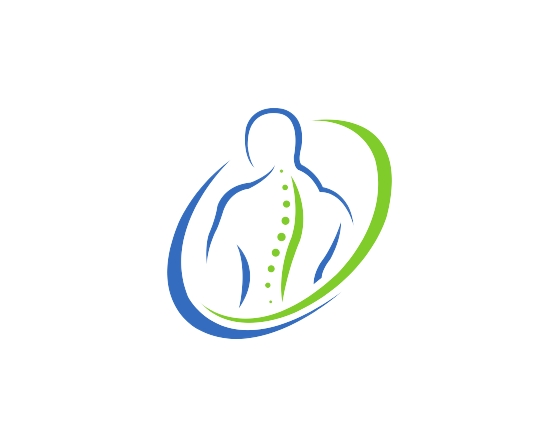Do you have a strong enough back?
Back fitness is primarily disregarded, although many believe we are fitness enthusiasts.
A healthy life requires a strong back. One of the most frequent causes of back discomfort and injuries is a weak back.
But I’ve got some excellent news for you. Back exercise routines can improve back health, strengthen the back, and protect the body from frequent injuries.
Here’s everything you need to learn about why it’s vital to develop back strength, the major back muscles to focus on, and how to safely achieve it without hurting your back.
Back and Health Risks of a Sedentary Lifestyle
People need to speak more about the back crisis that exists.
Your back muscles require particular care if you have a work or lifestyle that involves a lot of sitting, such as spending a lot of time in front of a computer.
Living a sedentary lifestyle can cause fat to build up and the muscles in the back to atrophy. Pain could get worse due to them becoming stiffer and more easily fatigued. With time, the pain could make it harder for you to move, which leads to more deconditioning and a decrease in the stability that your back muscles offer to the structures in your spine.
Don’t forget that your back muscles are some of the largest in your body. Weak or atrophying back muscles have a domino effect on the rest of the body. Because fat uses less energy from the body than lean tissue, a decrease in lean muscle mass in the back can make it harder to eliminate body fat. It may be one explanation for the correlation between inactivity and weight gain.
Furthermore, the World Health Organization (WHO) recently reported that sedentary lifestyles increase the danger of death from all causes. It doubles the risk of developing cardiovascular disease, diabetes, and obesity and boosts the dangers of colon cancer, high blood pressure, osteoporosis, lipid disorders, depression, and anxiety.
The complexity of the problem is highlighted by a 2019 study that analyzed the prevalence of back pain among 64 call center workers who spend most of their workdays sitting. 75% of the participants in the survey complained of experiencing either chronic or acute back pain. Researchers concluded that sedentary lifestyle habits correlate to chronic low back pain.
Moving around is essential for improving your spine, but weight training could help your back even more. Even those not yet experiencing back discomfort may find that adding back exercises to their routines helps them build lean body mass, supporting weight loss and wellness goals.
Benefits of Strengthening Your Back
A trainer or therapist may have suggested some lower back workouts, regardless of whether you’re an athlete, bodybuilder, powerlifter, or someone going through recovery. These can be recommended to treat back discomfort or included in regular exercise regimens to improve general body capability and prevent injuries.
In addition to being physically active, there are several reasons to focus on strengthening the back.
Improves your breathing.
The ability to help with breathing is one of the more unexpected advantages of performing back workouts. Everything from improving concentration to elevating mood can benefit from proper breathing.
You can keep a correct, firm posture more efficiently if your back is stronger. Your body will receive more oxygen if you sit and stand correctly. More oxygen helps to increase strength.
A stress reaction is produced by the body’s sympathetic nervous system when it is tense, uneasy, or in pain. Meanwhile, a relaxation response is triggered by the parasympathetic nervous system when the body is comfortable and calm.
Researchers have shown that using the proper breathing techniques can help reduce stress, prevent insomnia, control emotions, and improve focus. It’s one reason many individuals now use conscious breathing techniques to promote their bodily and emotional well-being.
While performing breathing exercises can be a terrific idea, you can achieve even better results by simply using your strong back to breathe more effectively whenever you need to, without having to think about it.
Enhances spinal alignment.
The alignment of the spine can be enhanced with a strong back. Performing usual activities without correctly stretching your muscles might start to draw up and lead to asymmetry. As a result of your movements, the body is dragged to one side. Then, the spine goes in the same direction. As a consequence, the spine is out of alignment.
When we concentrate on strengthening our back, we learn to perform even, balanced movements that bring the muscles and spine into equilibrium.
Relieves and prevents back pain.
Back strengthening is commonly used as a treatment for back pain. When your back is weak, it’s only a matter of time before it gets hurt. Back strength is still crucial when recovering from a back injury, even if you could be at the stage where a weak back is already causing pain.
The body can cure itself by releasing tension brought on by responding to back weakness by developing a solid and healthy back.
Because you rely on other muscles and tendons to make up for a weak back, back stretching and strengthening workouts can also rescue other portions of your body from suffering the same terrible outcome as your back.
Provides better flexibility.
Exercises for the back increase range of motion and flexibility. You can ensure that each action you make is deliberate and unconstrained by your muscles by concentrating on ensuring that your back performs as efficiently as possible.
One of the main reasons for injury is a lack of flexibility. The risk of muscular pulls or rips is reduced by strengthening exercises and flexibility training.
Promotes detoxification.
Exercises for the back are excellent for cleansing the body.
A stiff, weak back may cause problems, including stress, migraines, weakened immune function, and generalized body pain.
Stretching-focused back workouts are extremely impressive for the body’s detoxification process. Stretching causes your blood flow to rise. Reaching the muscles and organs that might not get enough oxygen when you’re stuck performing tasks such as sitting behind a desk for long periods sends a snowball effect of oxygen-rich blood flowing through your body.
Additionally, the brain receives this oxygen, giving it a brief brain boost. Various toxins that accumulate in the body’s soft tissue while you are sitting are eliminated as oxygen fills the body.
Major Back Muscles in Your Body
These are the main back muscles that you need to be aware of.
Latissimus Dorsi
The latissimus dorsi, often known as the broad, fan-shaped muscles, are the biggest muscles in your back. The lats extend from your mid-back down to your waist. They are attached to your humerus or the upper arm bone.
They serve as your primary pulling muscles for both vertical pulls (pullups) and horizontal pulls (rows). It implies that you can still train your lats even if you cannot perform pullups or pulldowns.
Teres Major and Teres Minor
Despite being smaller, these two muscles help with many essential aspects.
The teres major is regarded as the “lats’ little helper” in the fitness world because it mimics lat movements and aids in pulling.
On the other hand, the teres minor is a crucial component of your rotator cuff and aids with external shoulder rotation. When it comes to shoulder stability, the teres minor is fundamental.
Rhomboids
Rhomboids are large, thick bands of muscle that border your shoulder blades and effectively sit in the center of your upper back. They aid with shoulder blade retractions, which are crucial to all back exercises and vital to protecting your shoulders.
Rhomboid activity can improve your capacity to perform any back exercise.
Trapezius
Your traps are split into three primary portions: upper, middle, and lower. These muscles extend from the base of your neck to just beneath your tailbone.
Traps assist you in hunching your shoulders, pushing them downwards or toward your knees, and drawing them backward or away from your chest.
What Type of Exercise Helps in Strengthening Your Back
Numerous regular, daily workouts have significant positive effects on the back. For instance, there are various back-focused positions in yoga. Many individuals also contend that lifting weights and training are beneficial for building back strength. Common back exercises include rowing, pull-ups, and pull-downs.
Undoubtedly, there must be a balance. Back discomfort can result from too much strength training too soon and without the right coaching. In addition, some individuals begin new fitness programs unaware they already have back problems.
Someone with an undetected back issue may suffer a severe injury from a workout that may be safe for someone with no particular back problem. For this reason, many people consult with back pain and injury prevention specialists before beginning any new back-strengthening exercises.
Strengthen Your Back Safely
Your health and fitness should improve as well as your pain level with back strengthening. On the other hand, improperly exercising might lead to an injury or exacerbate pain. It’s why it’s essential to remain mindful before starting a back-strengthening routine.
Poor form and going overboard are the two main ways you risk injuring your back while exercising. Muscles can be stressed or even wounded by improper position. The same can occur when using excessive weight too quickly. Not warming up before starting could be another problem. Injury can happen if you start a workout with cold muscles.
Start slowly, without weights, and with a focus on proper form to improve your back muscles without increasing your pain. As you gain strength, you can add and increase the weights. Always begin with a warm-up exercise.
Before changing your fitness regimen, consult your doctor if you already suffer from back discomfort or an injury. Once you start a back-strengthening program, make sure you have permission. Of course, if a workout aggravates or worsens back pain, quit it right away.
Bottom Line
Back strength is essential for stability and safety during exercises and functional movement in daily life. The most significant advantage of strengthening your back is that it can help shield you from various types of back discomfort.
Back exercises can even assist with the standing and sitting that accompany many existing workplace duties. Because of this, they become even more critical to a diverse group of individuals.
Evaluate your options for including back-strengthening exercises in your workout training to increase injury prevention and total body performance.
Consider speaking with a back pain specialist and injury prevention expert to see what would work best for you if you’re ready to concentrate on strengthening your back so your body will be stronger and healthier.
This Crunchless Core program can benefit you if you want to effortlessly get six-pack abs without harming your back while enhancing your core strength.


